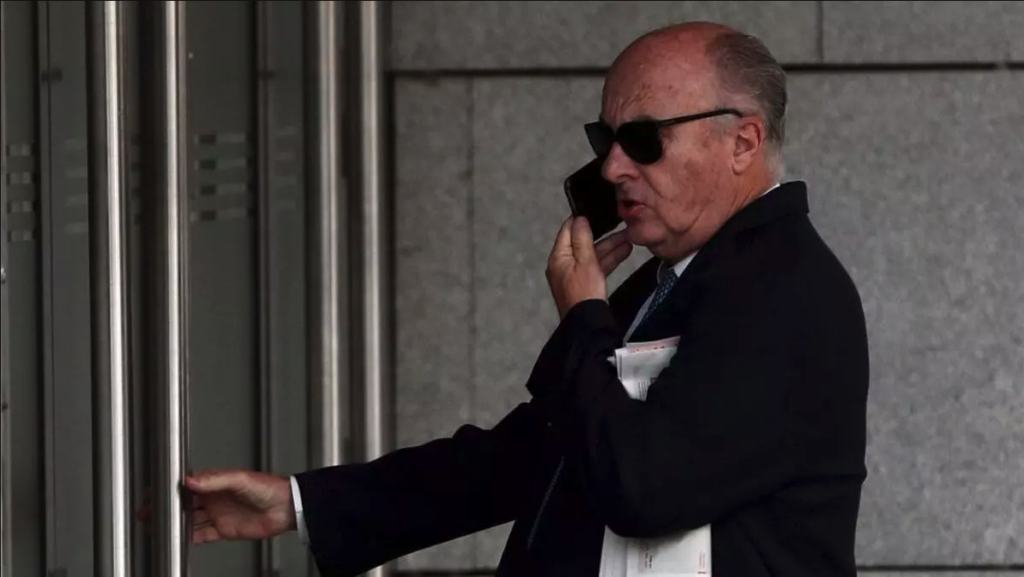08.11.2023 - 14:29
|
Actualització: 08.11.2023 - 14:31
Spanish special prosecution court judge Manuel García-Castellón has instrumentalized the death of a French tourist to try to strengthen the terrorism charges against those accused by Tsunami Democràtic, in case of a possible amnesty law. Now, lawyer Gonzalo Boye – representing Josep Lluís Alay – alleges, that the magistrate has not only failed to conduct any diligence to justify that the deceased is a victim of terrorism but his actions may have violated European law.
The reference to this deceased person, who did not appear in the Civil Guard’s report, to which VilaWeb has had access, has been interpreted as a move by García-Castellón to try to dismantle a hypothetical amnesty. According to what we know, the draft being negotiated includes cases of alleged terrorism -a crime for which the judge wants to investigate Carles Puigdemont, Marta Rovira, and eight other people- in which there have been no fatalities. By involving the accidental death of this French tourist, García-Castellón could bypass the amnesty and continue the judicial investigation for terrorism. The prosecution has already stated that it does not see any terrorism-related crimes committed and has announced that it will file an appeal against the judicial decision.
In a letter to the Spanish Audiencia, Boye seeks explanations from García-Castellón for not complying with the European directive to combat terrorism (2017/541) for four years. In Article 26 the law requests for the activation of cooperation protocols with other EU states to properly assist foreign victims, ensuring access to all information about their rights, support services, and compensation systems.
“It is unimaginable to think that more than four years after the events supposedly being investigated as a terrorist offense, no action has been taken in accordance with EU law. If that were the case, the mere existence and handling of this procedure would lead us to a violation procedure, with the consequences this would have for EU law and the overall image of justice,” the letter states.
In this regard, he asks García-Castellón to provide all the diligences carried out in accordance with Article 26 of the European directive and, if none have been conducted, to activate them urgently. He adds, “If the law has not been followed, inform the French authorities immediately about the serious violation this court may have committed.”
Finally, Boye also requests that the judge inquire with the French authorities if they have activated any mechanism to recognize the deceased as a victim of terrorism. It should be noted that in 2019, the French embassy in Spain already disassociated the man’s death from the Tsunami Democràtic protests.
SEM discredits García-Castellón’s maneuver. In the investigation of the case, the judge attributes the death of a French tourist from a heart attack at Terminal 2 of Barcelona Airport to the Tsunami Democràtic mobilization, even though the protest took place at Terminal 1.
Responding to an inquiry from VilaWeb, the Emergency Medical Service (SEM) explained that medical care at airports depends on AENA’s medical team. Now, following the protests, SEM had a preventive deployment at T2, offering immediate assistance and activating a medicalized helicopter. The sixty-two-year-old man ultimately died at Bellvitge Hospital.
In fact, the French tourist who suffered a heart attack at Barcelona Airport on the day of the Tsunami Democràtic mobilization was able to receive immediate medical attention precisely because of the mobilization. Sources from the Medical Emergency Service (SEM), consulted by VilaWeb, explain that typically, the medical care at airports is provided by AENA’s medical team, but on that day, SEM had ambulances in the area preventively, as is commonly done during street protests. Thanks to this, they were able to start urgent care before AENA’s medical service arrived.
At the same time, SEM activated a medicalized helicopter to evacuate the patient more quickly. The 62-year-old man was transported by air to Bellvitge Hospital, but they were unable to resuscitate him, and he passed away at the hospital.



